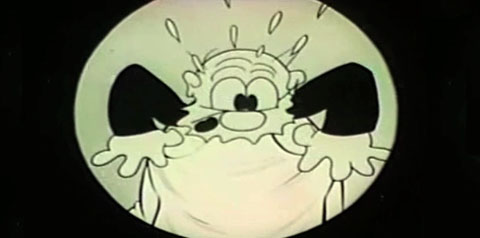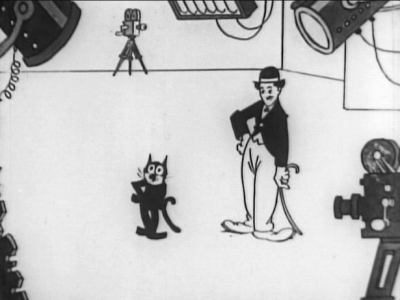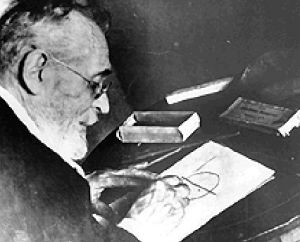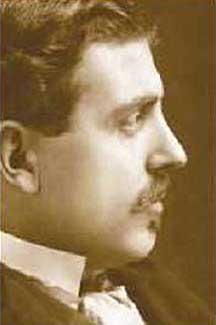Snack and Drink (Bob Sabiston, 1999)
Waking Life (Richard Linklater, 2001)
Background:
-Bob Sabiston's early career is very much in keeping with the tradition of individual innovation not unlike Blackton, Cohl, McCay, The Fleischers, etc.
-He invented software that allowed for simple tracing over existing footage; It was essentially a modern, digital version of the "rotoscoping" technique.
-Along with Tommy Pallotta, he made Roadhead (1999) which premiered at that year's ResFest.
-His software allows even novice animators artistic freedom to create poetic animation works; unlike the often mechanical movement in older rotoscoped films, Sabiston's animation movements are much more fluid and abstract.
-Sabiston and Pallotta team with fellow Austin, Texas resident Richard Linklater to make Waking Life.
-Sabiston was one of the key creative figures responsible for the animation in 2006's A Scanner Darkly.
Rotoscoping is an animation technique in which animators trace over live-action film movement, frame by frame. Pre-recorded live-action film images were projected onto a frosted glass panel and re-drawn by an animator. This projection equipment is called a rotoscope. Today, computers do the work. In the film industry, the term rotoscoping refers to the technique of manually creating a matte for an element on a live-action plate so it may be composited over another background.

Rotoscope by Max Fleischer, patent drawing from 1914.
The technique was invented by Max Fleischer, who used it to create his series Out of the Inkwell , with his brother Dave Fleischer performing the live-film shots for the character of Koko the Clown.
Fleischer used rotoscope in a number of short cartoons and in the feature film Gulliver's Travels (1939). The Fleischer studio's most effective use of rotoscoping was in their series of Superman cartoons.
Ralph Bakshi used the technique quite extensively in his animated movies Wizards (1977), The Lord of the Rings (1978), American Pop (1981), and Fire and Ice (1983). Bakshi first turned to rotoscoping after 20th Century Fox refused his request for a budget increase to finish Wizards, prompting him to use the technique to finish the film.
Kanye West's Heartless (2008) directed by Hype Williams uses rotoscoping.
Rotoscoping was also used in Heavy Metal (1981), the a-ha music video "Take on Me" (1985), and Don Bluth's Titan A.E. (2000).
While rotoscoping is generally known to bring a sense of realism to larger budget animated films, the American animation company Filmation, known for its budget-cutting limited TV animation, was also notable for its heavy usage of rotoscope to good effect in series such as Flash Gordon, Blackstar, and He-Man and the Masters of the Universe.
Smoking Car Productions invented a digital rotoscoping process in 1994 for the creation of its critically-acclaimed adventure video game, The Last Express. The process was awarded U.S. Patent 6061462: Digital Cartoon and Animation Process. In the mid-1990s, Bob Sabiston, an animator and computer scientist veteran of the MIT Media Lab, developed a computer-assisted interpolated rotoscoping process which the director Richard Linklater later employed in the full-length feature films Waking Life (2001) and A Scanner Darkly (2006). Waking Life was the first feature film comprised entirely of digital rotoscoping.

















